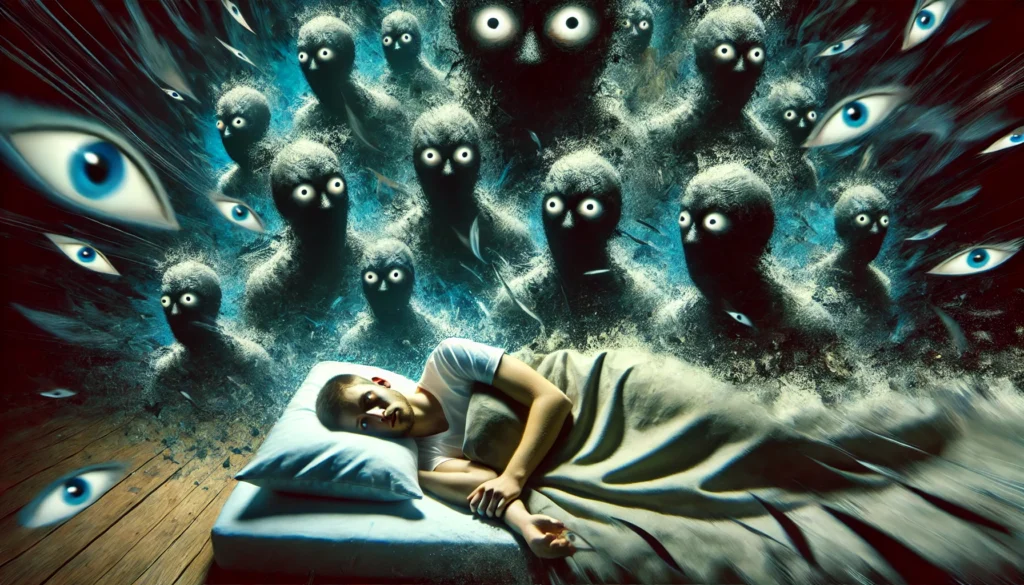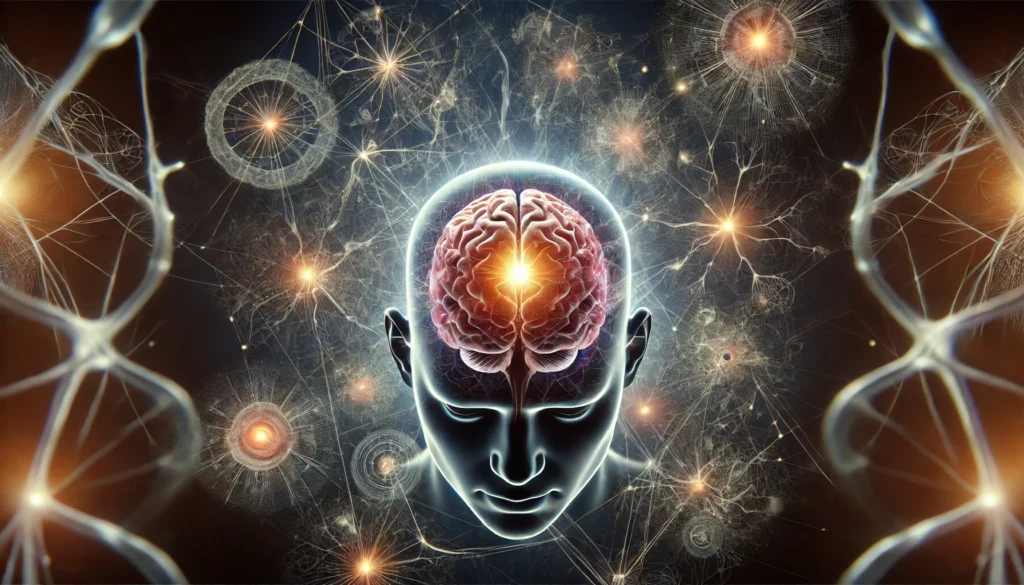Paranoia is characterized by an intense and irrational mistrust or suspicion of others. It can manifest as a symptom of various mental health disorders, including schizophrenia, delusional disorder, and paranoid personality disorder. Individuals experiencing paranoia may feel as though they are being watched, followed, or conspired against, even when there is no concrete evidence to support these beliefs.
The Psychological Underpinnings of Paranoia
Paranoia can be rooted in deep-seated psychological frameworks where past traumas or experiences of betrayal play a pivotal role. Individuals who have encountered significant emotional distress may develop paranoid tendencies as a defense mechanism. This response can become ingrained over time, leading to pervasive feelings of suspicion and mistrust in various aspects of life.
Genetic and Environmental Contributions
The origins of paranoia can be traced back to an interplay of genetic, environmental, and psychological factors. Genetic predispositions may increase susceptibility, with certain genes potentially affecting brain chemistry and increasing vulnerability. Environmental stressors such as trauma, prolonged exposure to stress, or chaotic living conditions can trigger or exacerbate paranoid thoughts, turning potential genetic vulnerabilities into active symptoms.
The Historical Context of Paranoia
Historically, paranoia has been documented in medical literature for centuries. Ancient texts from Greek and Roman times reference individuals exhibiting paranoid behaviors, describing them as being under the influence of malevolent forces or divine punishment. Over time, the understanding of paranoia has evolved, with modern psychiatry recognizing it as a complex mental health issue rather than a supernatural affliction.
Paranoia in Modern Society
In contemporary society, paranoia can be exacerbated by cultural and technological factors. The pervasive nature of surveillance, digital privacy concerns, and social media can amplify feelings of paranoia. This modern context requires a nuanced understanding of how societal changes contribute to individual psychological experiences, impacting daily life and mental health.
You May Also Like: Understanding the Impact of Chronic Sleep Deficiencies

How Paranoia Affects Sleep
Paranoia can significantly impact sleep quality, leading to conditions such as paranoia insomnia and “crazy sleep episodes.” The relationship between paranoia and sleep is bidirectional; while paranoia can disrupt sleep, poor sleep can, in turn, exacerbate paranoid thoughts.
The Cycle of Paranoid Sleeping
Individuals with paranoia often experience heightened levels of anxiety and hypervigilance, making it difficult for them to relax and fall asleep. The persistent fear and mistrust can lead to racing thoughts and a constant state of alertness, preventing the onset of sleep. This condition, known as paranoia insomnia, can result in a vicious cycle where lack of sleep intensifies paranoid ideations.
Crazy Sleep Episodes and Sleep Disorders
The term “crazy sleep episodes” may describe instances where individuals with paranoia experience intense nightmares or night terrors, further disturbing their rest. These episodes can lead to fragmented sleep and heightened anxiety upon waking, perpetuating the cycle of poor sleep and paranoia. Understanding these patterns is crucial for developing effective interventions that address both the psychological and physiological aspects of sleep disturbances.
Paranoia-Induced Stress and Sleep Deprivation
The stress caused by paranoia can lead to chronic sleep deprivation, which in turn affects cognitive function and emotional regulation. Sleep deprivation can amplify feelings of paranoia, creating a self-sustaining loop where psychological distress and poor sleep fuel each other. Addressing this loop requires comprehensive strategies that tackle both the root causes and the symptoms of paranoia.
The Role of Anxiety and Hyperarousal
Anxiety and hyperarousal are common companions of paranoia, both of which can significantly disrupt sleep. The constant state of alertness and worry can prevent the relaxation necessary for sleep onset and maintenance. Techniques to manage anxiety and reduce hyperarousal are essential for breaking the cycle of paranoia-related sleep disturbances.
The Science Behind Paranoia and Sleep Disruption
From a scientific standpoint, the connection between paranoia and sleep disturbances involves several biological and neurological factors. Paranoia is often linked to imbalances in neurotransmitters such as dopamine, which plays a role in mood regulation and perception. Similarly, sleep disorders can disrupt the regulation of neurotransmitters, leading to a compounding effect.
Neurotransmitter Imbalances and Their Effects
Imbalances in neurotransmitters like dopamine and serotonin are often observed in individuals with paranoia. These neurotransmitters are crucial for regulating mood and perception, and any disruption can lead to heightened feelings of mistrust and fear. Understanding the biochemical foundations of paranoia offers insights into potential therapeutic interventions that target neurotransmitter regulation.
The Role of the Sleep-Wake Cycle
The sleep-wake cycle, governed by the body’s circadian rhythm, can be disrupted by paranoia. Hyperarousal, a common feature of paranoid states, can alter the normal functioning of the hypothalamus, the brain region responsible for regulating sleep patterns. This disruption can lead to insomnia and irregular sleep cycles, further exacerbating symptoms of paranoia.
Brain Regions Involved in Paranoia and Sleep
Research into the brain regions involved in paranoia and sleep disruption reveals the complex interplay between the amygdala, prefrontal cortex, and hippocampus. These areas are integral to emotional processing, memory, and the regulation of fear responses. Disruptions in their function can lead to the persistence of paranoid thoughts and disturbed sleep, highlighting the need for targeted therapeutic approaches.
The Impact of Hormonal Fluctuations
Hormonal fluctuations, particularly those involving cortisol and melatonin, play a significant role in sleep regulation. Paranoia-induced stress can lead to elevated cortisol levels, which interfere with melatonin production and disrupt the sleep cycle. Addressing hormonal imbalances is a key component of managing paranoia-related sleep disturbances and restoring healthy sleep patterns.

Practical Strategies for Managing Paranoia and Improving Sleep
While managing paranoia and its impact on sleep can be challenging, there are strategies that individuals can implement to improve their overall well-being and sleep quality.
Cognitive Behavioral Therapy (CBT)
Cognitive Behavioral Therapy (CBT) is a widely recognized therapeutic approach for addressing paranoia and associated sleep disturbances. CBT can help individuals challenge irrational beliefs, develop coping strategies, and establish healthier sleep patterns. Tailoring CBT to address the specific fears and anxieties related to paranoia can enhance its effectiveness in promoting restful sleep.
Mindfulness and Relaxation Techniques
Incorporating mindfulness and relaxation techniques into daily routines can significantly reduce anxiety and promote better sleep. Practices such as meditation, deep breathing exercises, and progressive muscle relaxation can help calm the mind and prepare the body for restful sleep. These techniques can also foster a greater sense of control over one’s thoughts and emotions, mitigating the effects of paranoia on sleep.
Creating a Sleep-Conducive Environment
Optimizing the sleep environment is crucial for improving sleep quality. This includes maintaining a comfortable room temperature, minimizing noise and light disturbances, and establishing a consistent sleep schedule. Additionally, limiting caffeine and electronic device usage before bedtime can promote more restful sleep. Personalizing the sleep environment to meet individual needs can make a significant difference in managing paranoia-induced sleep disturbances.
Lifestyle Modifications and Healthy Sleep Habits
Adopting lifestyle modifications that promote healthy sleep habits is essential for managing the impact of paranoia on sleep. Regular physical activity, a balanced diet, and adequate hydration can contribute to overall well-being and support better sleep. Establishing a bedtime routine that prioritizes relaxation and reduces stress can enhance sleep quality and mitigate the effects of paranoia.
Future Implications and Research Directions
The understanding of paranoia and its impact on sleep continues to evolve, with ongoing research exploring new therapeutic interventions and insights into the underlying mechanisms. Future studies may focus on the development of targeted pharmacological treatments and personalized therapeutic approaches that address the unique needs of individuals experiencing paranoia-related sleep disturbances.
The Role of Technology in Sleep Management
Emerging technologies, such as wearable sleep trackers and mobile health applications, offer promising avenues for monitoring sleep patterns and identifying disturbances related to paranoia. These tools can provide valuable data for healthcare providers and individuals seeking to optimize their sleep quality. The integration of technology into therapeutic interventions could revolutionize the way paranoia and sleep issues are managed, offering real-time feedback and personalized insights.
Personalized Medicine and Pharmacological Advances
Advancements in personalized medicine hold potential for developing pharmacological treatments tailored to individual genetic profiles and neurotransmitter imbalances. Research into specific medications that target the biochemical underpinnings of paranoia could lead to more effective management of sleep disturbances. Personalized approaches that consider genetic, environmental, and psychological factors may enhance treatment outcomes and improve quality of life.
Collaborative Approaches to Research and Treatment
Future research directions may emphasize collaborative approaches that integrate insights from psychiatry, neurology, and sleep medicine. Multidisciplinary efforts can facilitate a comprehensive understanding of the complex interactions between paranoia and sleep, leading to innovative treatment strategies. Collaborative research initiatives could drive the development of holistic interventions that address the multifaceted nature of paranoia-related sleep disturbances.

Conclusion
Paranoia and its impact on sleep present complex challenges that require a nuanced and comprehensive approach. By understanding the interplay between psychological and physiological factors, individuals and healthcare professionals can develop effective strategies for managing these issues. With continued research and advancements in therapeutic approaches, there is hope for improving sleep quality and overall well-being for those affected by paranoia.
Incorporating practical strategies and staying informed about the latest developments in the field can empower individuals to take control of their sleep health and enhance their quality of life. As we deepen our understanding of the connections between paranoia and sleep, we pave the way for more effective interventions and improved outcomes for those facing these challenges.
Further Reading:
Sleeping Paranoia Away? An Actigraphy and Experience-Sampling Study with Adolescents
Important Note: The information contained in this article is for general informational purposes only, and should not be construed as health or medical advice, nor is it intended to diagnose, prevent, treat, or cure any disease or health condition. Before embarking on any diet, fitness regimen, or program of nutritional supplementation, it is advisable to consult your healthcare professional in order to determine its safety and probable efficacy in terms of your individual state of health.
Regarding Nutritional Supplements Or Other Non-Prescription Health Products: If any nutritional supplements or other non-prescription health products are mentioned in the foregoing article, any claims or statements made about them have not been evaluated by the U.S. Food and Drug Administration, and such nutritional supplements or other health products are not intended to diagnose, treat, cure, or prevent any disease.


